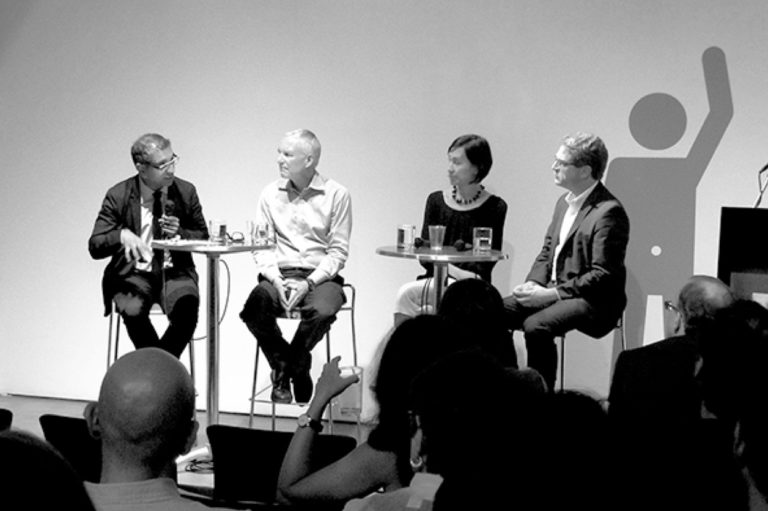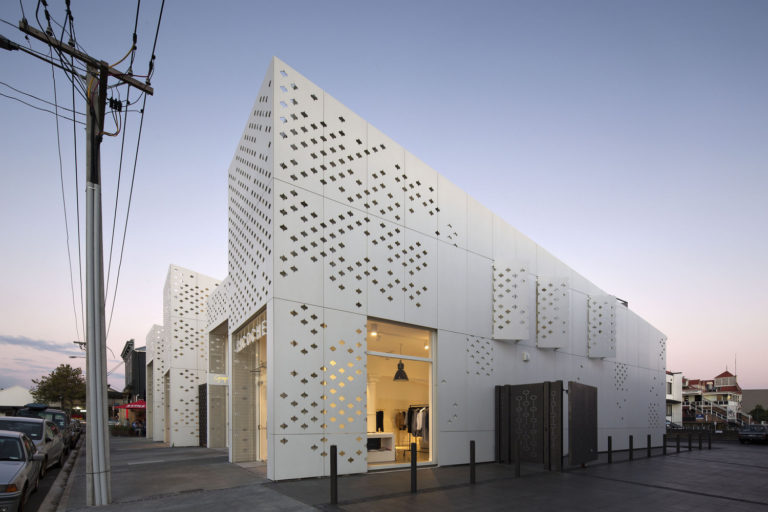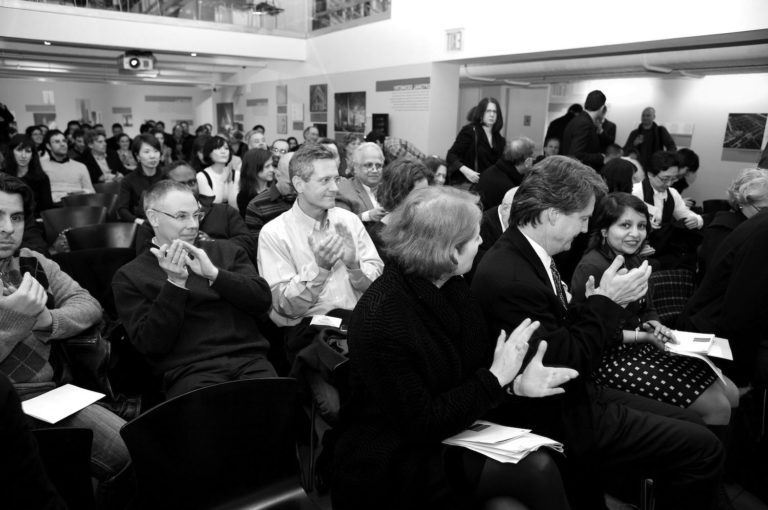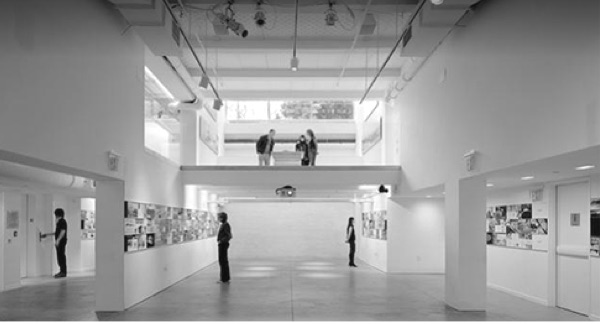by: Linda G. Miller
In this issue:
· The Great Blue Way
· The McKim Building Undergoes Restoration
· Artists Take Up Residence on Governors Island
· In Time for Summer: Parks and Recreation Open on West Side
· Princeton Reduces Dust, Vibration for Energy Research
· The Curtain Goes Up on Hylton Performing Arts
The Great Blue Way
Out of 150 submissions, the NYC Department of Transportation (DOT) in partnership with the Times Square Alliance, has selected Brooklyn-based artist Molly Dilworth’s “Cool Water, Hot Island” as the winning temporary treatment for the Times Square pedestrian plaza. The design, which is scheduled to be installed by mid-July, is composed of a graphical representation of NASA’s infrared satellite data of Manhattan. Its color palette reflects sunlight and absorbs less heat, thus making the plaza a more comfortable place to sit. The Alliance will maintain the treatment as the DOT initiates plans for a permanent plaza under the Department of Design + Construction’s Design Excellence program. As part of the longer-term project, DOT and DDC are working with architects, landscape architects, and engineers to design appealing plazas with ample seating, new paving, and underground infrastructure able to accommodate and enhance the signature events that are staged at Times Square throughout the year.
The McKim Building Undergoes Restoration
The Morgan Library & Museum’s McKim Building will undergo the most extensive restoration of its interior spaces since its construction more than a century ago. Designed by McKim, Mead & White, as the private study and library of Pierpont Morgan, the restoration will provide new and expanded exhibition space for the Morgan’s permanent collection. Key components include: new lighting throughout the building to better illuminate its murals and décor; the installation of new exhibition cases to house rotating displays; restoration of period furniture and fixtures; and the cleaning of the walls and applied ornamentation. Also, for the first time, the North Room, which will display the earliest works in the collection, will be open to visitors. Beyer Blinder Belle Architects & Planners, who served as executive architect during the Morgan’s 2006 expansion by Renzo Piano Building Workshop, will act as architect-of-record on the restoration. The museum reopens to the public on 10.30.10.
Artists Take Up Residence on Governors Island
The Lower Manhattan Cultural Council (LMCC) has opened its year-round artist studio program on Governors Island. More than 50 visual and performing artists in all disciplines were selected in a competitive request for proposals (RFP) held by the Governors Island Preservation and Education Corporation (GIPEC). The program resides on the island’s north shore in Building 110, a circa 1870s building originally used to store munitions and later occupied by offices for the Army and U.S. Coast Guard. The building renovation was designed and built by GIPEC and Cubellis, Davis Brody Bond Aedas did the interior fitted out of 14,000 square feet pro bono to house artist studios, two rehearsal areas, and exhibition space. Visual artists are provided studio space for five-month residencies, while performing artists receive rehearsal space for periods ranging from two weeks to two months. All LMCC artists-in-residence on the island are expected to show work when the island is open to the public.
In Time for Summer: Parks and Recreation Open on West Side
The NYC Department of Parks & Recreation recently cut the ribbon on Riverwalk, the pathway stretching from West 83rd to 91st Streets, completing the bike and pedestrian path along the Hudson River from Battery Park to Dyckman Street. Constructed on a pile-supported platform in and along the river, it features hardwood railing interspersed with bollard lighting and granite walls. Design consultants on the $15.7 million project were RGR Landscape and Stantec.
The newest sections of Hudson River Park, Piers 62 and 63 in Chelsea, were also officially opened. The two new piers and adjacent uplands join Pier 64, which opened last year, to form nine acres of new green space. The construction includes a great lawn, a landscape created by artist Meg Webster, a public garden designed by Lynden Miller Public Garden Design, and a new California-style skate park. The park also includes a Hudson River carousel complete with a “green” roof. The design team for the Chelsea segment of Hudson River Park was led by Michael Van Valkenburgh Associates and included Beyer Blinder Belle Architects & Planners, CR Studio Architects, Mueser Rutledge Consulting Engineers, Maitra Associates Engineers, Ysrael A. Seinuk Consulting Engineers, U Lighting, Skanska USA, and Ove Arup & Partners.
Battery Park City’s long delayed Teardrop Park South, also designed by Michael Van Valkenburgh Associates, has finally opened with two water features, a stacked wooden amphitheater, sun-refracting heliostats atop neighboring buildings to reflect light into the shadowy gardens.
Princeton Reduces Dust, Vibration for Energy Research
Plans for Princeton University’s Andlinger Center for Energy and the Environment were recently released. Designed by Tod Williams Billie Tsien Architects, the 127,000-square-foot center will provide specialized facilities for sustainable energy research. The plan builds on the findings of a faculty steering committee that worked with Davis Brody Bond Aedas to develop a program study. The design calls for three interconnected buildings built of mostly brick and glass and include a range of needs, from highly specialized labs to classroom and meeting spaces. The lab with the most demanding technical requirements will reduce the amount of airborne dusts one-thousand-fold, a requirement for nanotechnology research. It also will contain imaging labs for microscopes examining atomic material, which require an ultra-low vibration environment. To achieve such low vibration, the labs will be built directly on top of bedrock, below the natural grade level. Instead of being fully underground, the space will open to gardens.
The Curtain Goes Up on Hylton Performing Arts
The Hylton Performing Arts Center on the Prince William campus of George Mason University in Manassas, VA, recently opened after a 10-year effort to make this performing arts venue a reality. Designed by Holzman Moss Bottino Architecture, the $44 million, 85,000-square-foot facility clad in copper, glass, and masonry will provide a setting for local, national, and international arts groups and performers, as well as university-related activities. Within the nine-story venue is Merchant Hall, a 1,121-seat, multi-functioning theater modeled on the classic European opera houses for an intimate audience experience. The hall features flexible acoustics and stage/pit configurations, a movable orchestra shell, and rows of box seating. No seat in the house is more than 95 feet from the stage. In addition, the center contains a 4,400-square-foot black box theater, a 1,000-square-foot practice studio, an art gallery, and a donor’s lounge. Sterling, VA-based Hughes Group Architects served as the architect-of-record.













